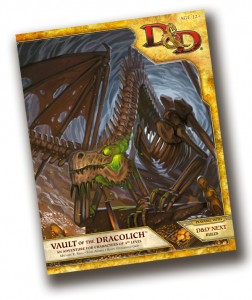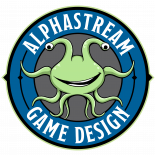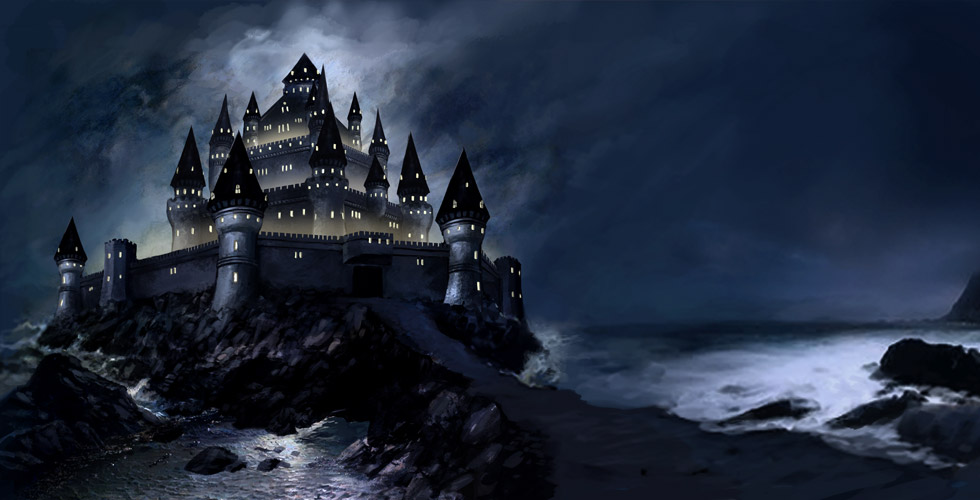How Vault Influenced Confrontation at Candlekeep
What goes into creating a convention adventure for Wizards of the Coast? Why do Vault of the Dracolich and Candlekeep have different styles? How did a battle interactive come to replace a delve? How well does RPG historian Shannon Appelcline capture Candlekeep’s process and history? I aim to answer this and more in three articles this week. I also draw parallels to 1980s, showing the history of organized play experimentation.
Background
Here are a few basics related to the history of convention adventures:
- In the 1970s, D&D ran “tournament scenarios” at Gen Con, Origins, and other major conventions. These were competitive, with tables trying to get the best score. Many of the early classic adventures (Against the Giants, Tamoachan, Inverness, Slaver series, etc.) began this way and were later published. Others had portions appear at conventions both as promotion and to support conventions.
- The Gen Con Open became the biggest competition, crowning champions and providing great prizes. As WotC perceived declining interest or benefits from competitions, it made the Open the only competitive event and finally retired it after 2013.
- Battle Interactives: convention events where many tables participated simultaneously in an adventure and their actions could impact each other became commonplace during the Living Greyhawk campaign (2000-2008). “BIs” have since been a part of many companies’ organized play campaigns.
- The Delve was introduced in 2006 as a quick combat-heavy intro to D&D. It allowed tons of players to get a taste of D&D (and hopefully come back for more), but little story or roleplay.
- Lair Assault was a 2011-2013 4E store program where the PCs were in a short scenario challenging enough that they may have to play it several times to succeed.
- During the late 3E era and throughout the 4E era, Wizards of the Coast did not play an active role in creating convention content. The organized play programs did so, usually with minor review by WotC. WotC did manage and design in-store events, including gamedays and weekly programs (the most successful is D&D Encounters, started in 2010).
“We hadn’t realized until then how much the tournament could be, should be, a showcase event. The players who came to Wisconsin deserved a deliberately crafted experience, something that could show TSR and AD&D in the best possible way.” – David “Zeb” Cook, in the 2013 forward to Against the Slave Lords, looking back on the 1980 adventure series.
Vault of the Dracolich
Vault of the Dracolich was the progenitor to Candlekeep. Scott F. Gray, Mike Shea, and I wrote Vault for a June 2013 gameday, though our writing took place in Oct-Nov 2012. WotC wanted to see whether a gameday could be transformed from the typical adventure format into a very exciting event: a hybrid between a battle interactive and Lair Assault. It was the first public in-store 5E event and a huge success. The adventure is currently a Gold Best-Seller on DnDClassics.
 I was likely brought onto the project because I had been involved with many organized play battle interactives. Having tables come together and collaborate was a design motivation from the beginning. I added a few angles based on my experiences, including the idea the addition of an event coordinator. This was typical for large battle interactives, to ensure the different DMs and their tables have similar pacing, to answer questions, and to help stimulate and direct interactivity. It was a bit risky, because stores could be short on volunteers… but overall it worked well.
I was likely brought onto the project because I had been involved with many organized play battle interactives. Having tables come together and collaborate was a design motivation from the beginning. I added a few angles based on my experiences, including the idea the addition of an event coordinator. This was typical for large battle interactives, to ensure the different DMs and their tables have similar pacing, to answer questions, and to help stimulate and direct interactivity. It was a bit risky, because stores could be short on volunteers… but overall it worked well.
Vault resembled a tournament or Lair Assault in that it had some very difficult parts (including monsters immune to the PCs’ weapons). We did tone down the challenge from the original vision of dying often, because players like success. I thought it would promote D&D better that way, and I added elements such as the ability for a dead PC to jump back into play through a modified form of undeath (and the other writers perfected my rough ideas). I’ve seen too many battle interactives where a few players sit out the majority of the event because they died early.
Candlekeep’s product history notes that Vault is a “dungeon crawl in the classic style”, and this was largely driven by the need to provide a big map that would encourage parties (all playing simultaneously on the same map) to explore separately. (This is also why you have the sense of a limited time to find scattered artifacts). I think we made it a fairly ideal dungeon crawl: full of interesting bits, including story elements that could connect together, and with all of it making sense – the different monsters are actually near the breaking point due to being forced to be near one another. One table might find out that there is a rift between factions and tell another table so the second table can set the factions against each other. Players could get the feeling that this was a real place, with realistic politics and ongoing events. Mike and Scott were amazing here, breathing so much life into this part of the adventure.
One big change the product history doesn’t note: The project’s approach was a new one for Wizards. We were all freelancers acting as a team, instead of writing and submitting our work separately to WotC for them to put together. Mike was the author, I was the developer, and Scott the editor (and first draft cartographer). As a result, we all collaborated heavily and all took turns scheming, writing, developing, and editing. Vault remains one of my favorite projects. We really worked well together and the project felt fantastic from the initial vision to the final touches. Wizards ran it internally as part of the playtest process far in advance of the gameday, and it was a lot of fun for them.
This was a great team. Mike had worked previously on a Lair Assault adventure, as well as many 4E projects. He routinely explores D&D in his blog. Scott has had an incredible breadth of projects, including the 4E version of Tomb of Horrors. He has at least 20 levels in adventure writing and multiclasses in all design aspects! And, as a further influence, Scott Fitzgerald Gray went on to write the Sundering adventure Dreams of the Red Wizards: Dead in Thay, which takes Vault’s ideas on a medium sized dungeon capable of handling multiple groups and makes it much larger. Dead in Thay brings in even more classic dungeon concepts to bear, and was used for D&D Encounters store play. It is one of my favorite Encounters seasons. Scott helped edit the 5E core books, further showcasing his contributions to our hobby.
Next: we look at Candlekeep’s authoring process.
Want more? Here is what Mike Shea wrote on different ways to use Vault of the Dracolich.

Contents of the kit sent to stores for Vault of the Dracolich included a huge map with stickers to mark dracolich and party locations and a player handout.



 Mastodon
Mastodon BlueSky
BlueSky
Pingback: Writing Confrontation at Candlekeep | Alphastream
Pingback: Return of the Classics | Alphastream
Pingback: DMs Guild Sale! | Alphastream
Pingback: Vault of the Dracolich (2013): Greatest D&D Adventures Since 1985—Number 7 | DMDavid